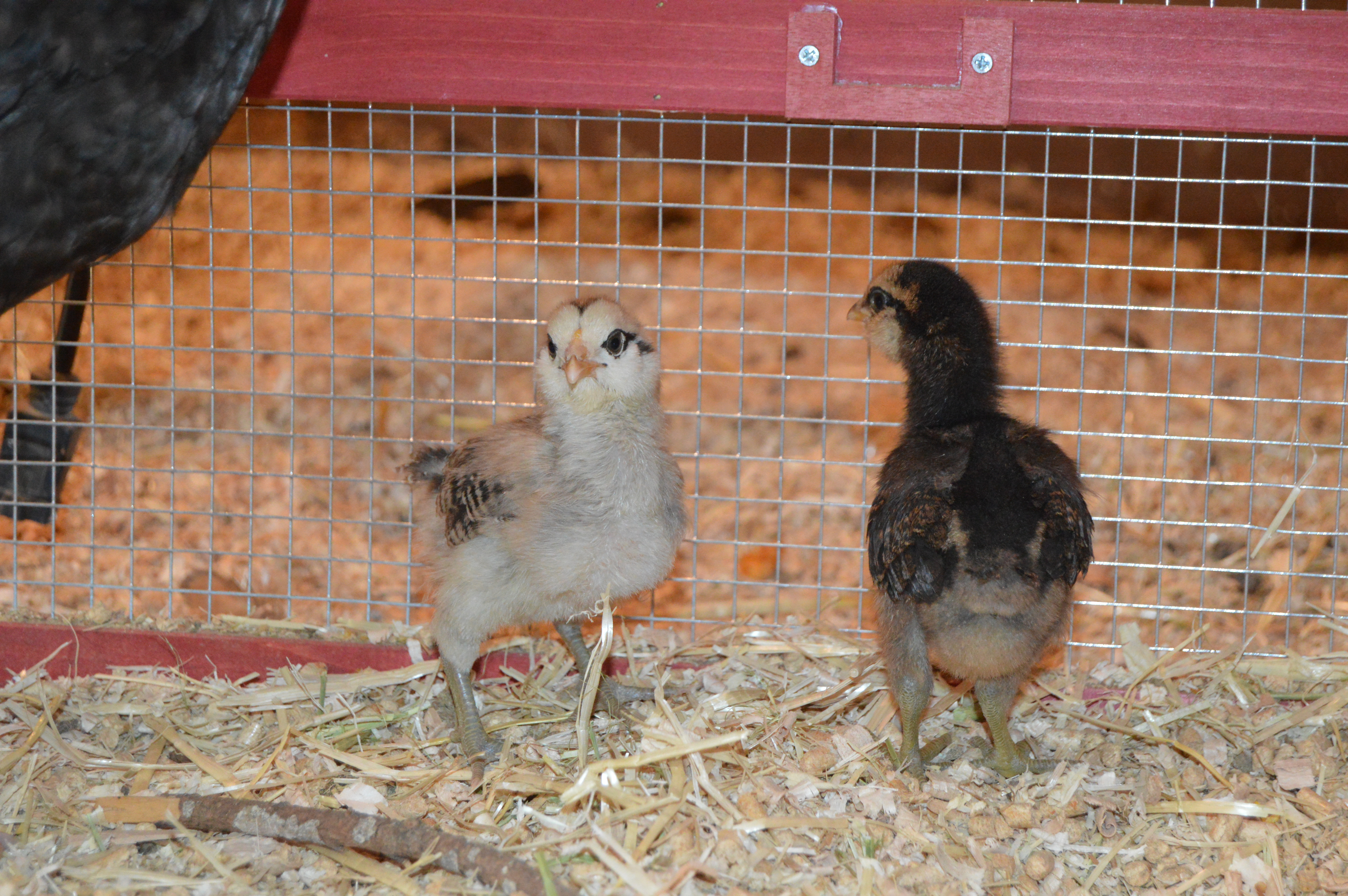There are plenty of benefits to having a mixed flock of varying chicken breeds. The rainbow of eggs you collect each day makes having different breeds so much fun! Some breeds stick together. For example, the yellow chickens or the Buff Orpingtons in one of our staff's flock seem to go everywhere together. This is common and many chicken keepers will tell you this happens within mixed flocks.

Photo courtesy Christy Caplan
Some chicken breeds are also at risk of extinction! It's important to consider these 13 breeds! Remember, some breeds look pretty and lay green eggs, but they aren't the best layers - do your research. Here's why you should consider a mixed flock.
Some chicken keepers prefer brown eggs and will look at breeds like Rhode Island Reds (RIR) or The Brahma chicken. Perhaps you're hoping for white eggs? Araucanas and Ameraucanas will lay green and blue eggs but not as many as the RIR!
Keeping chickens is not for everyone, but researching breeds of chickens is where you should begin. Although it's fun to go with the egg colors you're hoping to see when you collect eggs at the end of the day, you should also consider chicken behavior and personality traits. For example, which chickens tend to be broody hens? Buff Orpingtons have this trait and it's not always desirable unless you really want chicks.
Want eggs all year long?

Photo courtesy Christy Caplan
It's wonderful to be able to count on fresh eggs year round. Different breeds lay during different seasons and some lay more eggs than others.
One Acre Farm tells us,
"Each breed lays eggs of a characteristic size and color."
Egg production should be considered after researching the behaviors that best suit you, the heritage breeds that may need saving and different sizes pending your coop, and the region you live in.
Our staff's fave chickens are the brown egg layers! Marans will lay dark chocolate eggs and there are a lot of chicken keepers that enjoy this breed for this type of egg specifically. Remember that different breeds lay better in winter!
Make sure they're compatible.

Photo courtesy Christy Caplan
Your backyard flock needs to get along. It's not always going to be rainbows and unicorns, but you should set your flock up for success. There will always be an important pecking order in place and some birds will be at the bottom of the pecking order. Polish chickens are smaller birds and Wyandottes are larger hardy chickens. Considering size is important as the Polish birds may end up getting picked on since they're smaller hens.
Also, will you free range your birds or will they stay in a secure area near the coop? Space is key to a having a happy chicken flock, so the chicken coop plays an important role for backyard chickens too.
Disease resistance is another piece to consider when researching a mixed breed flock of laying hens. Our staff has a mixed flock of Orpingtons, Wyandottes, Rhode Island Reds, Easter Eggers, and Australorps. Other keepers enjoy Barred Rocks and White Leghorns. There are plenty of breeds to choose from.
Do you have a mixed flock? Which breed is your fave? Please tell us in the comments below!
WATCH NOW: Chicken Shows Are Amazing




